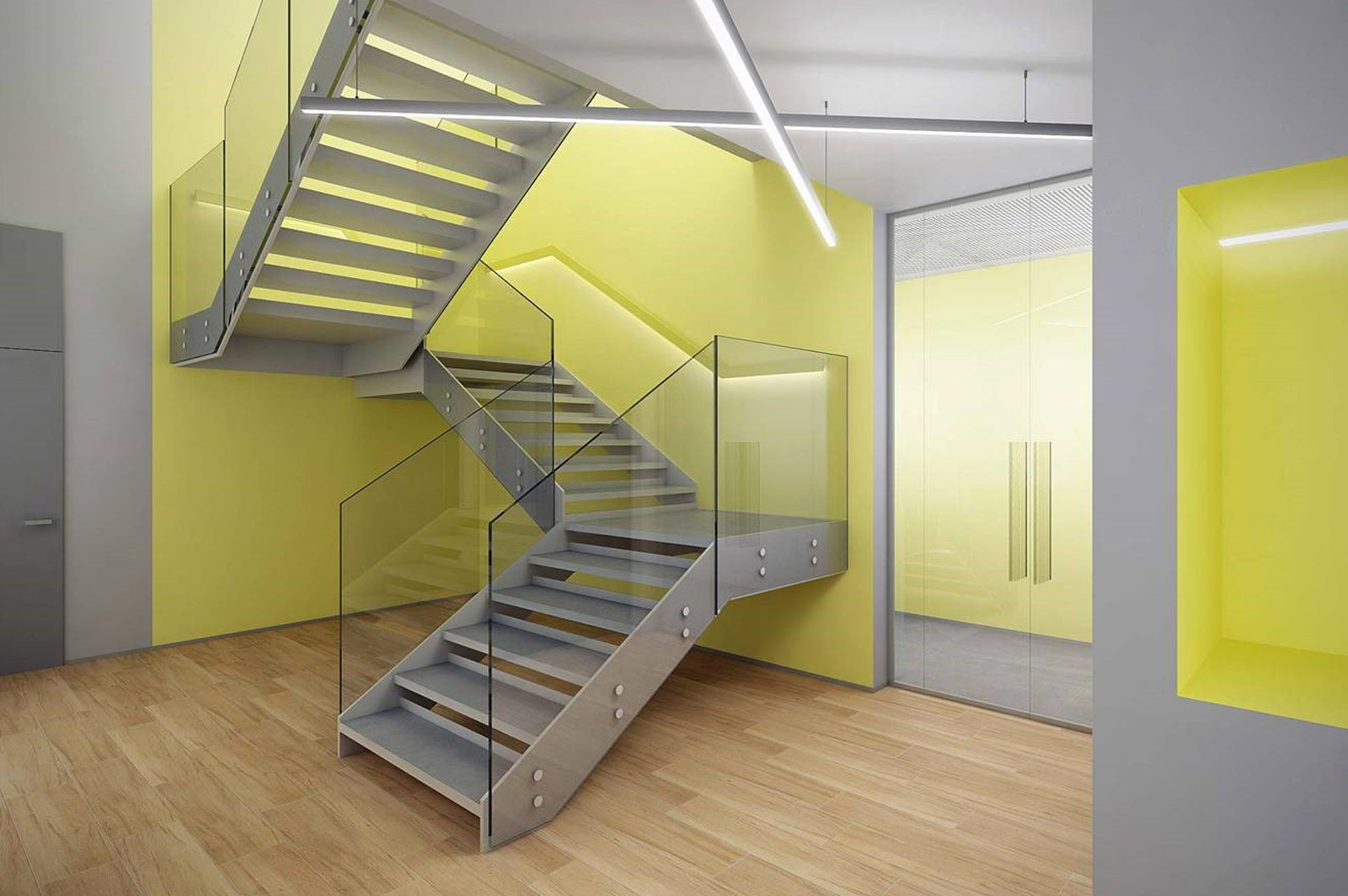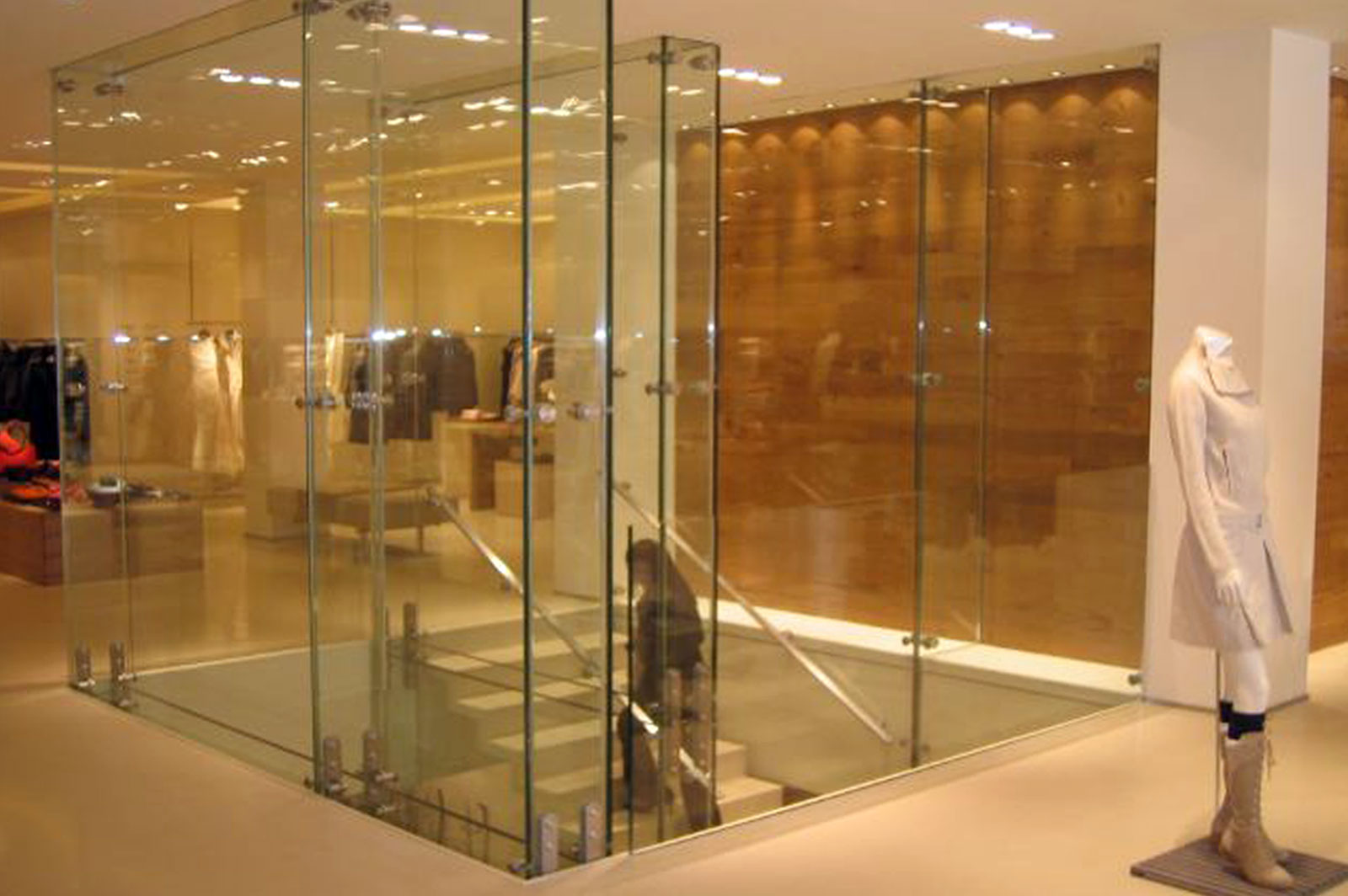
IMMASTE – Reggio Emilia (Italy)
3 May 2019
Max Mara – Old Bond Street – London
4 May 2019Client:
Unity R.E. Spa - Max Mara
Architect:
Studio Arch. Bruno Gianolla, Mestre (VE)
Customer:
Berti SCL
Facade builder:
Berti SCL, Venezia
The glass and stainless steel structure is situated in the internal site of Max Mara’s shop in Mestre Italy). It is characterized by a flat covering surrounded in 3 sides with the perimeter building walls and with a vertical façade of connection, between the floor and the free side of the covering.
The plan is trapezoidal and the covered space’s area is about 50 square meters large.
The Studio Cattivelli’s assignment is converting the technical solutions into the engineering systems for allowing the components production and laying, the elaboration of the architectural executive drawings (with their plans), the prospects, the sections and the details, the production plates of the several components expected in the supply, the calculations and the calculation report of the steel beams, of the critical glasses and of the more stressed supports, the laying instructions and the specific building technical document.
Each component is studied for a minimalist architecture, accented with the biggest slenderness and the minimum size, compatibly with the security norms.
The construction is completely realized with glass, hold up by a supporting structure made of painted steel beams.
This building is composed of beams and pillars, connected in the point of intersection (by bolted connections) and so they model the “L” portals.
The plan’s subdivision is made with 6 glass slabs positioned all along the covering length.
Along the short side, the glasses are separated in 2 slabs of about 2,6 metres.
The slabs are in double-glazing type and they are made for sustaining the accidental loads (like the snow), or, as an alternative, the maintenance load. The glasses are all tempered +HST indeed.
To avoid the direct irradiation to the underlying clothes and for a correct approval, the anti-irradiation system is made by a pointed printing for the covering glasses, with about the 45% of full points. In this way, the light spread is enough for an interior architectural view.
The vertical façade presents the same covering models, so there are 6 mirrors with 2 central moving parts of the façade
The movement is realized with specific sliding accessories, fixed on the highest part of the slabs and with a visible carriage system that moves on a stainless-steel circular board, all the façade long.
The connection between the vertical façade and the covered curtain wall is realized with the insertion of a steel structure positioned perpendicularly with the main portals.
The architectural result is a sort of continuous “sail” with a visible steel finishing, that can be seen from the outside. Inside, it is covered by a reflecting glass slab, expressly insulated.
In correspondence with the longitudinal vanishing point of the covering glasses, there is a longitudinal knee brace realized with painted Fe430 steel tubulars, fixed by a specific sliding system in each transverse supporting structures.
The supporting structure is positioned in the external side of the curtain walls, horizontally and vertically.
The architectural section is the same for all the beams along, and it’s composed by 2 Fe430 steel plates (250 x 15 millimetres). They are flanked and outdistanced by a welding composed with 2 full rectangular tubulars.
The northern row of glasses has a moulded and cantilever higher slab, for aligning with the most external part of the steel portals. The union between the glasses is made by grey structural polymer.





